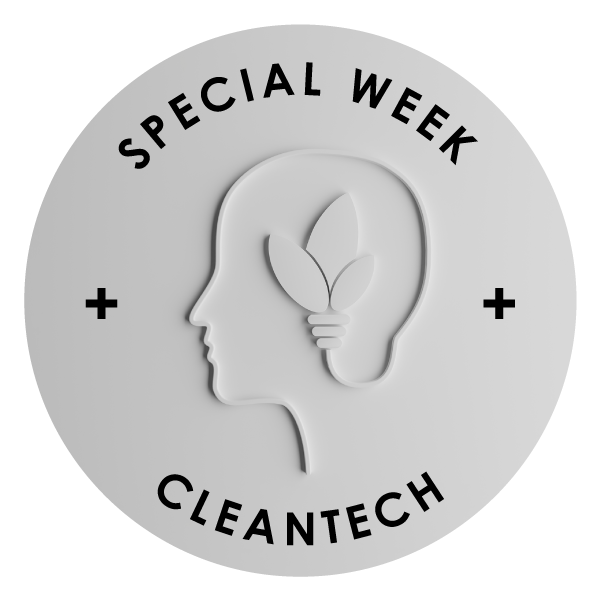In the Middle East, the market for wind power continues to grow, creating more efficient and affordable technologies that are vital in ensuring the efficacy of the sector. Currently, Saudi Arabia, Kuwait and Jordan all have set capacity targets for wind-generated electricity over 1,000MW between 2020 and 2030. 
Tyer Wind, a Tunisian start-up dedicated to research in wind energy, has designed a wind converter that produces power by imitating the flutter of hummingbirds. This new machine marks a breakthrough in mechanics, being much more compact and silent than conventional wind convertors and ideal for residential areas. Its design is based on the movement of the hummingbird’s wings. In this interview, Anis Aouini, inventor, co-founder and chairman of Tyer Wind, says it is a must to invest in new non-conventional cleantech that can compete directly with the oil & gas industry.
Excerpts from the interview:
What has been the most significant change in the cleantech industry in the last few years?
In the last few years, the scope has changed in the hands of decision-makers, despite the light delay. They became aware of the urgent need for cleantech benefits to move faster towards the green economy. Due to climate change, huge mega green projects have been undertaken worldwide. Even in the Middle East, cleantech is valorised, and change is happening.
What trends are you most excited about in the cleantech field right now?
Wind power hasn’t already taken its run-up, and the new uprising of non-conventional wind technologies can stimulate the wind of change. Concentrated solar energy hasn’t been enough valorised, and the mixture between new Stirling engine versions and concentrated solar energy can become an interesting cleantech deal.
Tell us some of the common mistakes that you see cleantech entrepreneurs make.
During the last decades, the entrepreneurs and the global players in the cleantech industry haven’t adequately invested in R&D. They were trapped by conventional technologies, which led to a resistance to change. Because up until today, no sustainable technology can compete with oil & gas energy without government grants and support. This undeniably creates the urgent need for a green technology substitute, which is efficient, cost-saving, and more nature-friendly.
What inspired you to develop Zero-Blade technology? How is it different from other wind turbine technology?
Tyer Wind is a biomimetic technology inspired by the famous hummingbird. Anyone can be easily endowed by the natural magic concepts when observing nature. And that makes biomimicry the best way to innovate and create new eco-friendly concepts with no need for labs or big R&D infrastructure. Simply because we live in the most advanced and sophisticated laboratory, which is nature.
Unlike the conventional wind turbine with bladed rotors, Tyer Wind technology is bladeless and less rotational. It is based on a self-oscillatory wave wind converter which provides several advantages that the conventional technologies are suffering from, such as avifauna problems, efficiency, noise, radar wave disruption, and landscape integration, among many other issues.
When are you planning to bring the turbine to market?
The implementation plan of Tyer Wind technology is as predicted, despite the pandemic. However, we are trying to meet the due deadline by the end of 2023 against all odds.
We will bring the Tyer Wind converter to the global market with two large-size versions, one with 250KW and the second with 1MW. Meanwhile, our strategic flagship product 2MW will be available for energy producers by 2026.
Tell us how Tyer Wind is going to impact the wind energy sector?
To overcome the drawbacks of conventional wind technology, we have found a substitute inspired by nature to satisfy nature. The introduction prices of Tyer Wind technology on the international market will be very competitive, even with Indian and Chinese wind turbine manufacturer rivals. It’s an upmarket product with affordable prices and advantages.
How challenging is it to clean up the heavy-duty power industry?
The Kyoto Protocol and the United Nations COP are not realistic as they are betting on a direct energy transition from oil & gas to green, this strategy can’t be ALARP (as low as reasonably practicable). Most of the used energy in the world is still based on oil & gas and coal, representing 85 per cent vs 3 per cent for cleantech, except for hydroelectric production.
What is relevant is to ensure a smoother and softer transition toward a green economy by investing in new oil & gas-based technologies that are cleaner and with strict environmental compliances. On the other hand, it is a must to invest in new non-conventional cleantech that can compete directly with the oil & gas industry.
If you liked reading this, you might like our other stories
How AI Is Transforming Renewable Energy
Does Cleantech Have The Power To Disrupt The Middle East?









